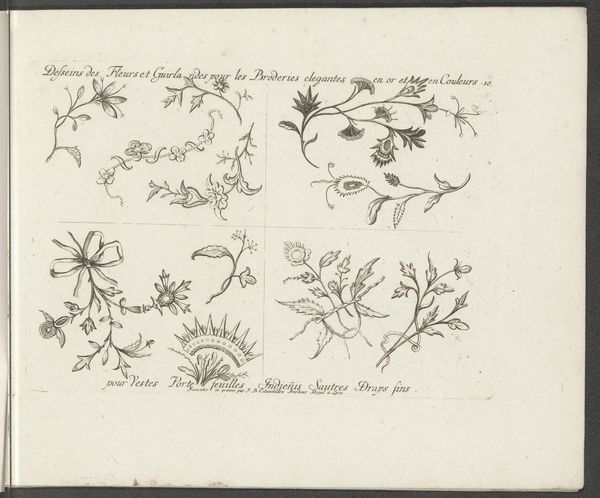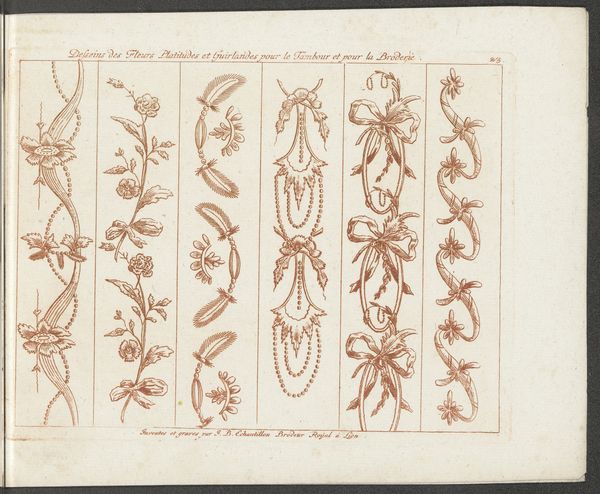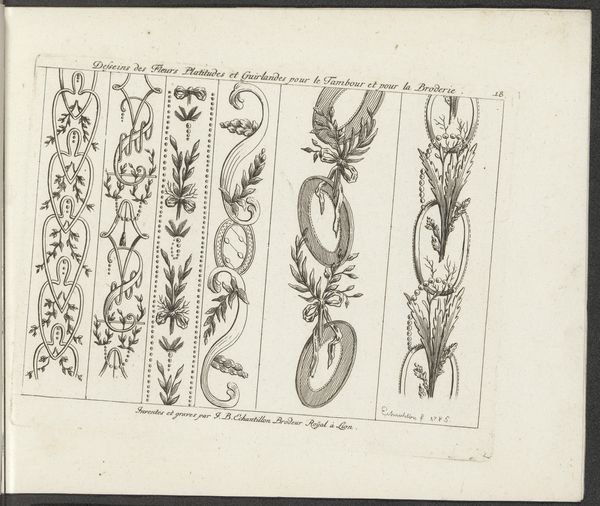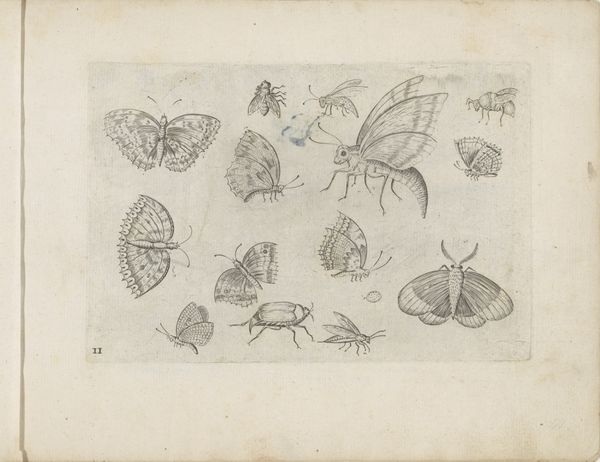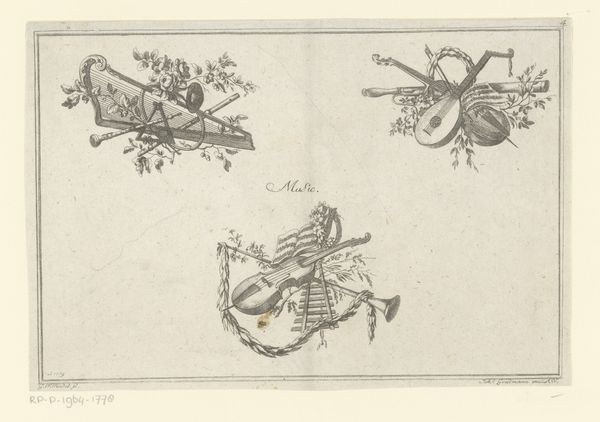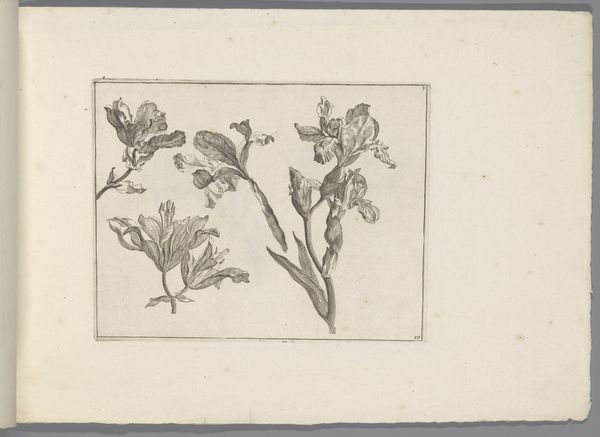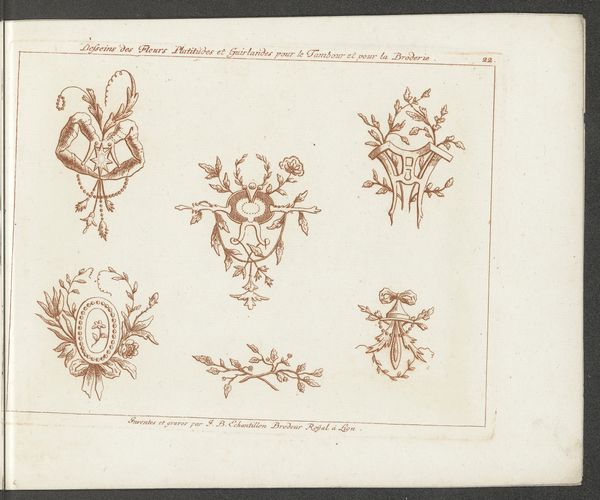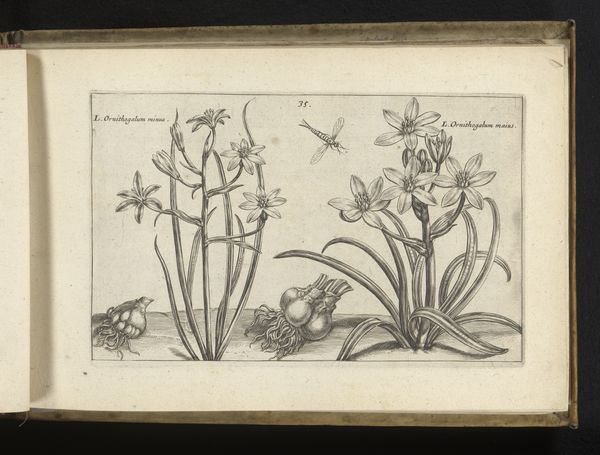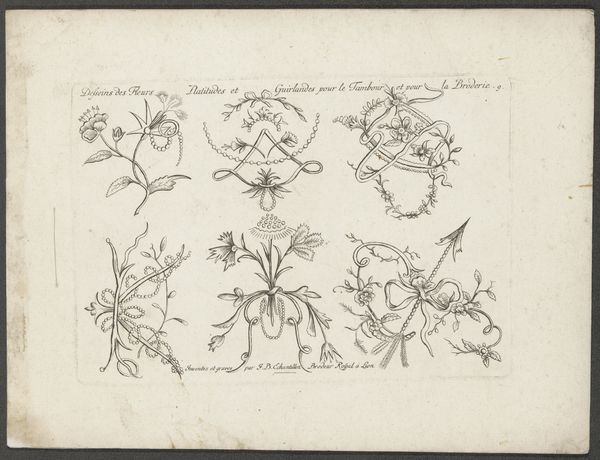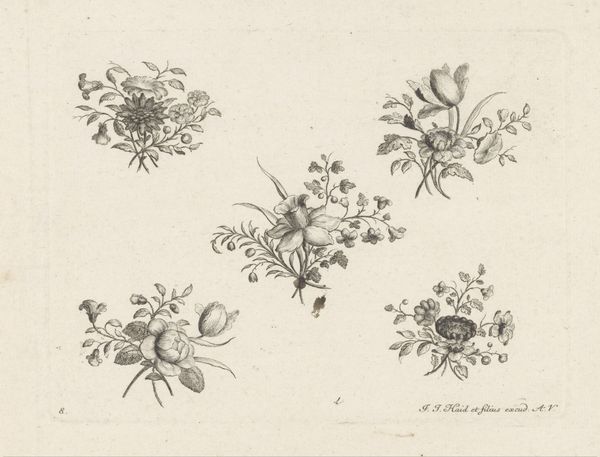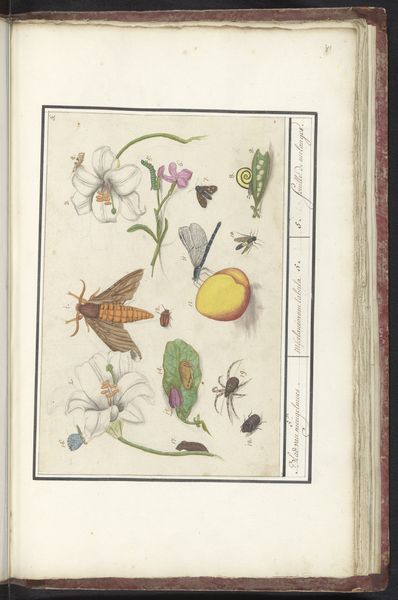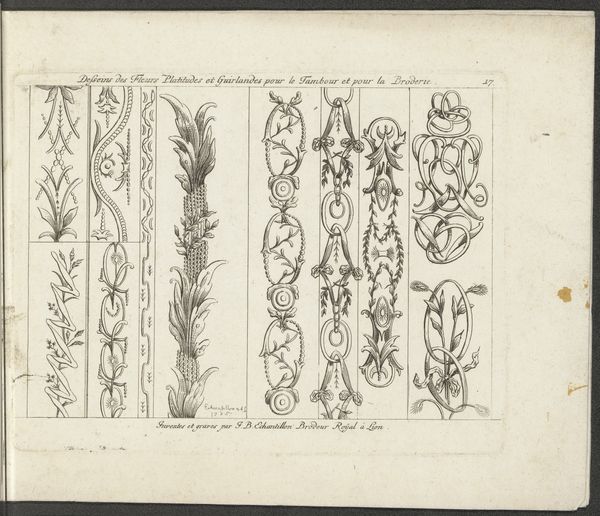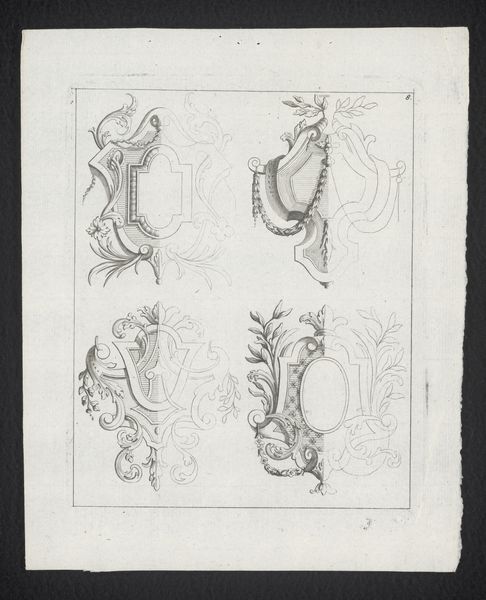
#
pen illustration
#
pen sketch
#
personal sketchbook
#
ink drawing experimentation
#
pen-ink sketch
#
thin linework
#
pen work
#
sketchbook drawing
#
storyboard and sketchbook work
#
sketchbook art
Dimensions: height 158 mm, width 225 mm
Copyright: Rijks Museum: Open Domain
Curator: This is "Zes bloemmotieven," or "Six floral motifs," a pen and ink drawing by Jean Baptiste Echantillon, created in 1784. It's currently held in the Rijksmuseum. What’s your immediate reaction? Editor: They appear delicate, almost ethereal. There's a lightness to the linework, despite the precision, giving each design a feeling of movement and possibility. Curator: I see it as an expression of its time—the late 18th century and its fascination with ornamentation and detail, reflecting larger class structures where only some were allowed to wear these designs. Embroidery itself had sociopolitical implications, signifying status. Editor: Absolutely. Looking at the details, the repetition of floral elements hints at deeper meanings. The individual flowers themselves might hold symbolic weight, echoing themes of beauty, ephemerality, or perhaps even secret languages specific to the culture of the time. Curator: I appreciate your analysis of their symbolic presence. Considering the time period, this imagery could be interpreted as a form of quiet rebellion. What meanings were hidden behind them? Did that provide certain communities an opportunity to engage in shared identities away from prying eyes? Editor: These motifs are incredibly intricate, speaking to me as small narratives, each garland or bloom containing untold stories about lived lives. They feel very intentional. Curator: Their visual rhythm of thin lines and repeated shapes draw the eye across the whole sheet. Perhaps the real beauty here lies in its invitation to project our own meanings onto them, considering what role these floral motifs had on communities in this period, especially outside the dominant upper classes. Editor: Exactly. The way these patterns are archived opens a window onto personal adornment of centuries past, creating a kind of visual memory linking us to those that preceded us. Curator: I see it too: that act of remembering those lives through these emblems. Editor: Overall, spending this time looking has underscored just how much cultural weight these images can possess across time. Curator: For me, it’s emphasized that these aesthetic decisions and how people interpret and connect through objects are still ever-present social, political, and intimate human interactions.
Comments
No comments
Be the first to comment and join the conversation on the ultimate creative platform.
